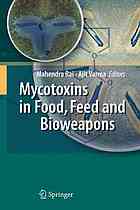

Most ebook files are in PDF format, so you can easily read them using various software such as Foxit Reader or directly on the Google Chrome browser.
Some ebook files are released by publishers in other formats such as .awz, .mobi, .epub, .fb2, etc. You may need to install specific software to read these formats on mobile/PC, such as Calibre.
Please read the tutorial at this link: https://ebookbell.com/faq
We offer FREE conversion to the popular formats you request; however, this may take some time. Therefore, right after payment, please email us, and we will try to provide the service as quickly as possible.
For some exceptional file formats or broken links (if any), please refrain from opening any disputes. Instead, email us first, and we will try to assist within a maximum of 6 hours.
EbookBell Team

5.0
30 reviewsMycotoxins are made by different biosynthetic pathways, and they have an extremely wide range of pharmacological effects. This book will update readers on several cutting-edge aspects of mycotoxin research, including topics such as: new analytical methods for detection; the adoption of an ancient Mexican process for detoxification of aflatoxins; mycotoxin management in Ireland, Lithuania and South America; mycotoxin reduction through plant breeding and integrated management practices; and natural aflatoxin inhibitors from medicinal plants. Further contributions examine ochratoxins, selected trichothecenes, zearalenone, and aflatoxin-like gene clusters, as well as sclerotial development in Aspergillus flavus and A. parasiticus. Of particular interest are the chapters on the potential use of mycotoxins as bioweapons. This book will stimulate new thinking on the need to develop therapeutic as well as preventative interventions to reduce the toxicological threat of mycotoxins.